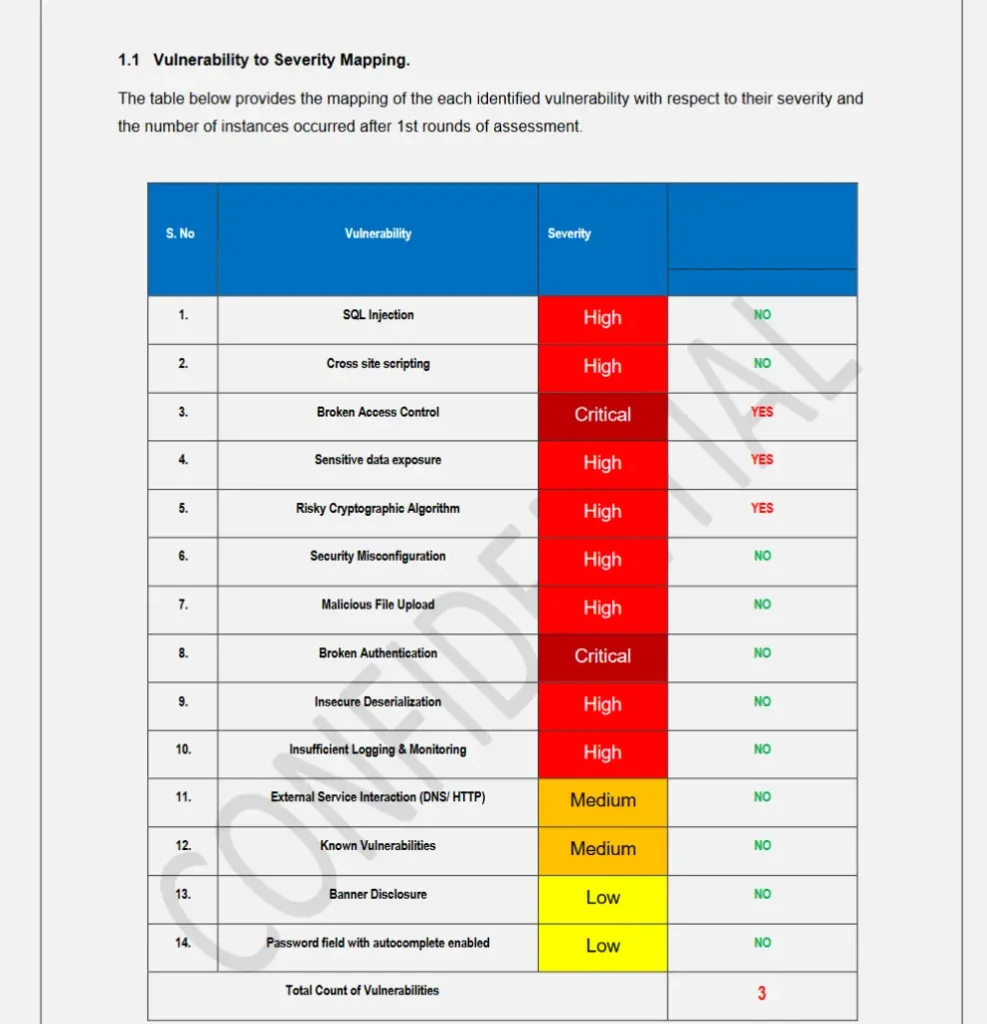Fortifying React JS Applications: A Case Study on React JS Apps Vulnerability Assessments and Penetration Testing

Introduction: In the realm of web development, React JS has emerged as a popular framework for building dynamic and interactive user interfaces. However, with innovation comes risk, and ensuring the security of React JS applications is paramount in an era marked by escalating cyber threats. This case study delves into Cyber Rely’s collaboration with a leading tech startup to conduct comprehensive vulnerability assessments and penetration testing on their React JS applications, highlighting the critical role of proactive security measures in safeguarding digital assets.
Client Profile: Our client, a dynamic tech startup specializing in e-commerce solutions, relied heavily on React JS applications to deliver seamless user experiences across web platforms. Recognizing the inherent security challenges associated with web development, they sought Cyber Rely’s expertise to assess and enhance the security posture of their React JS applications.
Objectives of React JS apps Vulnerability Assessments:
- >>Identify and mitigate vulnerabilities within the client’s React JS applications, including common web application security flaws.
- >>Assess the effectiveness of existing security controls and defensive measures implemented within the React JS ecosystem.
- >>Simulate real-world cyber attacks targeting React JS applications to evaluate resilience and response capabilities.
- >>Provide actionable insights and recommendations to bolster the security of React JS applications and mitigate identified risks.
Methodology: Cyber Rely’s seasoned team of cybersecurity experts embarked on the engagement by conducting meticulous vulnerability assessments of the client’s React JS applications. Leveraging a combination of automated scanning tools and manual code reviews, they meticulously scrutinized the applications’ codebase, dependencies, and third-party integrations to uncover potential security weaknesses.
Subsequently, penetration testing was conducted to simulate targeted cyber attacks against the React JS applications. By emulating the tactics employed by malicious actors, Cyber Rely’s ethical hackers sought to exploit identified vulnerabilities, including cross-site scripting (XSS), injection flaws, and authentication bypass vulnerabilities, among others.
Key Findings:
- Vulnerability Exploitation: Penetration testing revealed exploitable vulnerabilities within the client’s React JS applications, including XSS vulnerabilities stemming from insufficient input validation and inadequate output encoding.
- Insecure Authentication Mechanisms: Assessments uncovered weaknesses in authentication mechanisms, including session management flaws and inadequate password policies, posing risks to user accounts and sensitive data.
- Third-Party Dependency Risks: Analysis of third-party dependencies highlighted potential risks associated with outdated libraries and frameworks, underscoring the importance of rigorous dependency management practices.
Recommendations and Implementation: Armed with actionable insights gleaned from vulnerability assessments and penetration testing, Cyber Rely collaborated closely with the client to develop a targeted remediation strategy. This strategy encompassed the implementation of secure coding practices, robust input validation mechanisms, and enhanced authentication controls to mitigate identified risks effectively.
Results and Impact: Through proactive collaboration with Cyber Rely, our client achieved significant improvements in the security posture of their React JS applications. Key outcomes included:
- Mitigation of Critical Vulnerabilities: Prompt remediation actions were undertaken to address identified vulnerabilities, reducing the risk of exploitation and potential data breaches.
- Strengthened Security Controls: By implementing recommended security controls and best practices, the client bolstered the resilience of their React JS applications against common web application threats.
- Enhanced User Trust: The proactive approach to security demonstrated the client’s commitment to safeguarding user data and fostering trust among customers and stakeholders.
Conclusion: In an era characterized by escalating cyber threats, securing React JS applications is paramount to safeguarding digital assets and preserving user trust. Through strategic collaboration with Cyber Rely, our client achieved tangible improvements in the security posture of their React JS applications, exemplifying the transformative impact of proactive security measures and vulnerability management initiatives in today’s dynamic web development landscape.
Explore Comprehensive Penetration Testing Services
In addition to vulnerability assessments for React.js applications, it’s crucial to ensure that your entire infrastructure is secure from top to bottom. For a thorough and professional penetration testing service that identifies vulnerabilities across a wide range of systems and networks, visit our dedicated platform PenTest Testing. With our expert team, we provide in-depth security assessments, ensuring your systems are fortified against potential cyber threats.